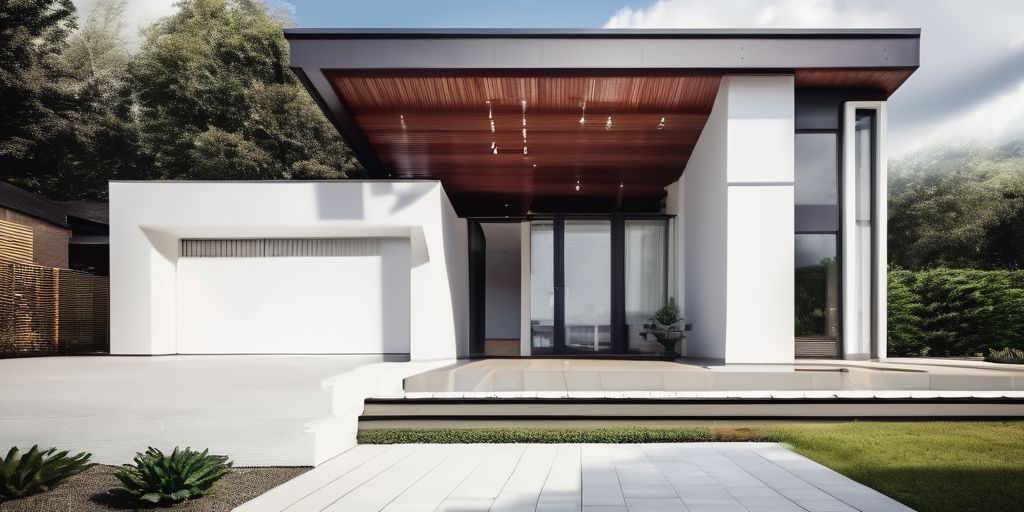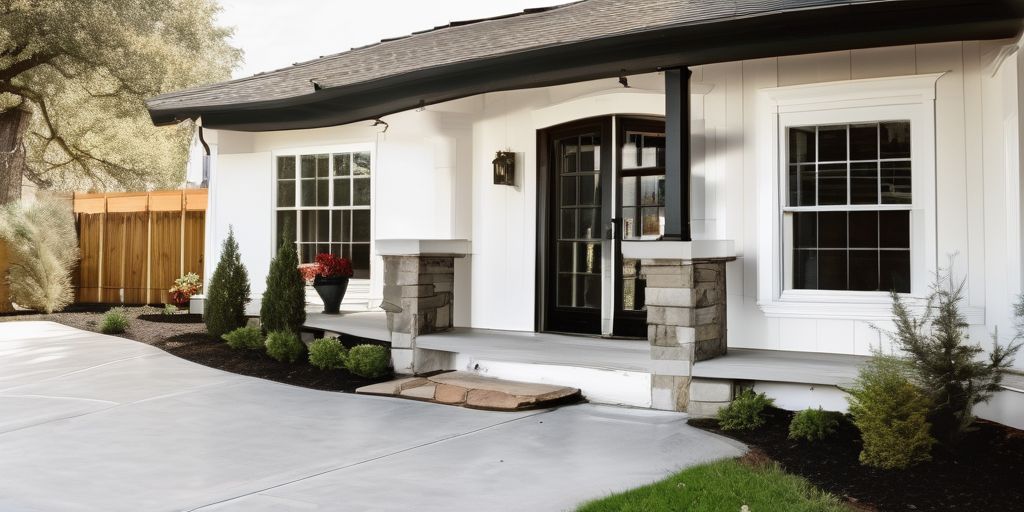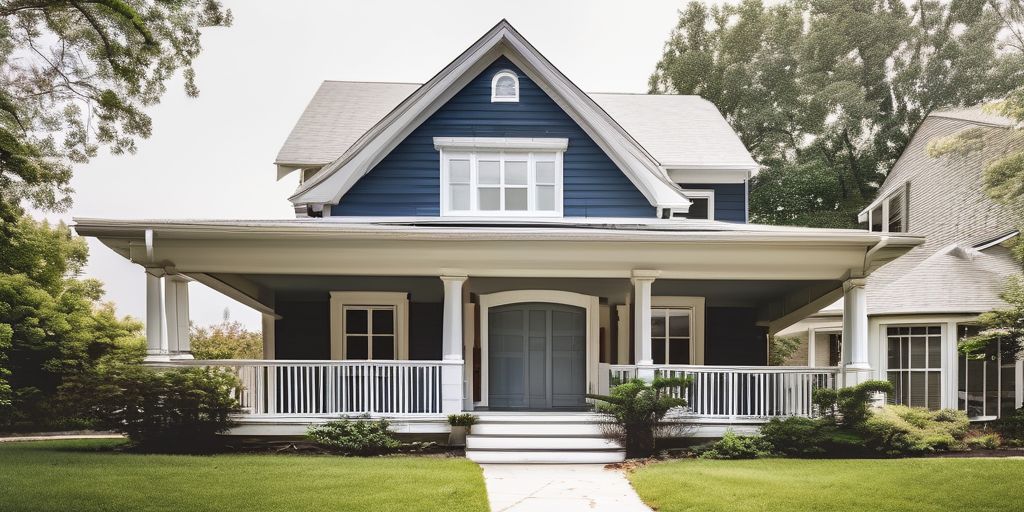Painting aluminum siding can be a great way to refresh the look of your home, but it comes with its own set of challenges. From dealing with bugs that get stuck in fresh paint to addressing peeling and condensation issues, there are many common problems you might face. This article will guide you through troubleshooting these problems so your paint job looks great and lasts a long time.
Key Takeaways
- Timing your painting can help avoid bugs getting stuck in fresh paint.
- Properly identifying and managing condensation can prevent moisture issues.
- Surface preparation is crucial to avoid peeling paint on aluminum siding.
- Cleaning the siding thoroughly before painting ensures better paint adhesion.
- Hiring professional painters can save time and ensure a high-quality finish.
Dealing with Bugs on Fresh Paint
Painting aluminum siding can be a rewarding project, but dealing with bugs on fresh paint can be a real challenge. Here are some tips to help you manage this common issue effectively.
Timing Your Painting
- Paint during cooler parts of the day to avoid attracting bugs that are more active in the heat.
- Aim to finish painting before dusk, as many bugs become more active in the evening.
- Check the weather forecast to ensure you have a few dry days ahead, reducing the chance of bugs getting stuck in wet paint.
Preventing Bug Attraction
- Use bug-repellent additives in your paint to deter insects from landing on it.
- Keep outdoor lights off during and after painting, as lights attract bugs.
- Trim nearby trees and bushes to reduce the number of bugs in the area.
Handling Bug Infestations
- If bugs do land on your fresh paint, wait until the paint dries before gently removing them with a soft brush.
- For larger infestations, consider using a mild soap solution to clean the affected area once the paint has fully cured.
- Regularly maintain and clean your painted surfaces to keep them looking fresh and bug-free.
Remember, timing your painting and taking preventive measures can save you a lot of hassle in the long run.
Managing Condensation Issues
Condensation can be a real headache when painting aluminum siding. Moisture build-up can cause paint to peel and ruin your hard work. Here’s how to manage it effectively.
Identifying Condensation Problems
Condensation often appears as water droplets on surfaces, especially in the mornings. It can start as soon as the sun goes down. If you notice water streaks on your fresh paint, you might have a condensation issue. This is more common with primers, which dry more slowly.
Preventing Moisture Build-Up
To prevent moisture build-up:
- Improve air circulation by opening windows and running fans.
- Consider installing a dehumidifier to keep the air dry.
- Insulate cold water pipes with foam to reduce condensation.
- Ensure your attic is well-ventilated to prevent moisture from moving down the walls.
- Use a vapor barrier on the warm side of exterior walls and ceilings.
Choosing the Right Paint
Selecting the right paint can make a big difference. Look for paints that are designed to resist moisture. These paints are less likely to peel when exposed to condensation. Also, painting during dryer seasons, like fall, can help reduce the risk of condensation issues.
Tip: Proper construction and maintenance can eliminate most exterior water problems. Make sure your home has adequate overhangs and well-maintained gutters to protect against rainwater splash.
Addressing Peeling Paint
Peeling paint on aluminum siding can be a common issue, but it is manageable with the right approach. Proper preparation and maintenance are key to ensuring a long-lasting paint job. Here are some steps to help you address peeling paint effectively.
Causes of Peeling Paint
Understanding why paint peels is the first step in preventing it. Common causes include:
- Poor surface preparation
- Using the wrong type of paint
- Painting in unfavorable weather conditions
- Moisture build-up
Proper Surface Preparation
Before you start painting, make sure the surface is clean and smooth. Follow these steps:
- Scrape away any loose paint.
- Sand the surface to create a rough texture for better adhesion.
- Clean the surface thoroughly to remove dirt and grease.
- Rinse with clean water and let it dry completely.
Using the Right Primer
A good primer can make a big difference. Choose a primer that is compatible with aluminum siding and the paint you plan to use. Apply the primer evenly and let it dry before applying the top coat.
Tip: Always address any rust concerns before repainting aluminum siding to ensure a smooth finish.
By following these steps, you can prevent peeling and keep your aluminum siding looking fresh and well-maintained.
Cleaning Aluminum Siding Before Painting
Before you start painting, it’s crucial to clean your aluminum siding thoroughly. This step ensures that the paint adheres properly and lasts longer. Here’s how to do it right:
Removing Chalking
Old aluminum siding often has a layer of chalking, which can prevent new paint from sticking. To remove this, you’ll need:
- A bucket of water
- A suitable detergent
- A soft-bristle brush
Mix the detergent with water and scrub the siding gently. Rinse thoroughly and let it dry completely.
Eliminating Mildew and Mold
Mildew and mold can also affect paint adhesion. Use a solution of water and chlorine bleach to clean these areas. Painter Jim Clark recommends wearing rubber gloves and using abrasive pads for this task. Make sure to rinse well and allow the siding to dry.
General Cleaning Tips
- Always start with the lowest pressure setting if you’re using a power washer.
- Avoid using harsh chemicals that can damage the siding.
- Ensure the surface is completely dry before you start painting.
Proper cleaning is the foundation of a successful paint job. Skipping this step can lead to peeling and poor adhesion, making your efforts go to waste.
Repairing Damaged Aluminum Siding
Repairing damaged aluminum siding can help maintain your home’s appearance and prevent further issues. Here are some steps to get you started:
Fixing Scratches and Dents
One of the most common problems with aluminum siding is scratches and dents. These can be unsightly and may lead to moisture damage and mold growth. To fix these issues:
- Sand down the damaged area until smooth.
- Clean the area thoroughly to remove any debris.
- Apply a primer if needed, then repaint the area to match the rest of the siding.
Replacing Damaged Sections
Sometimes, the damage is too severe to simply sand and paint. In these cases, you may need to replace entire sections of the siding. Here’s how:
- Remove the damaged section carefully to avoid harming the surrounding areas.
- Measure and cut a new piece of siding to fit the gap.
- Secure the new piece in place, ensuring it aligns with the existing siding.
- Paint the new section to match the rest of your home.
Sanding and Smoothing Surfaces
Before painting, it’s crucial to prepare the surface properly. This involves:
- Sanding the entire area to create a smooth surface for painting.
- Cleaning the siding to remove any dust or debris.
- Applying a primer to ensure the paint adheres well and lasts longer.
Proper surface preparation is key to a successful paint job and can significantly extend the longevity of your aluminum siding.
By following these steps, you can keep your aluminum siding looking great and protect your home from potential damage.
Choosing the Right Paint for Aluminum Siding
Types of Paint
When painting aluminum siding, exterior acrylic latex paint is the top choice. It sticks well to metal and lasts a long time. Avoid glossy finishes as they can highlight small dents or imperfections. Instead, go for satin or eggshell finishes. These are easier to clean and resist stains better than flat finishes.
Weather Considerations
Weather plays a big role in painting. Pick a dry day with mild temperatures. Avoid painting in direct sunlight or when it’s windy. This helps the paint dry evenly and prevents dust from sticking to the wet paint.
Application Techniques
Good technique is key for a smooth finish. Start by cleaning and repairing the siding. Use a primer made for metal surfaces. Apply the paint in thin, even coats, letting each coat dry for at least 48 hours. This ensures a durable and attractive finish.
For maximizing curb appeal, consider bold colors that make your home stand out. Proper paint selection, surface preparation, and smooth application are crucial for a stunning and long-lasting result.
Hiring Professional Painters
Benefits of Professional Help
Hiring a professional painter can save you time and effort. Professional painters have the experience and tools to get the job done right. They can handle everything from surface preparation to the final coat, ensuring a smooth and long-lasting finish. Plus, they can offer advice on the best types of paint and techniques for your specific needs.
What to Look for in a Painter
When choosing an exterior painter, consider the following:
- Experience: Look for painters with a proven track record in exterior painting.
- Licensing and Insurance: Ensure they are licensed and insured for your protection.
- References and Reviews: Check their references and read reviews from previous clients.
- Detailed Estimates: Get a detailed estimate that includes all aspects of the job.
Getting a Quote
To get an accurate quote, provide the painter with as much information as possible about your project. This includes the size of the area to be painted, the condition of the siding, and any specific requirements you have. A good painter will offer a detailed quote that outlines the cost of materials, labor, and any additional services.
Reviving your home: painting old aluminum siding. Proper assessment, cleaning, paint selection, and maintenance tips for a professional finish. DIY vs. professional considerations for successful project.
Hiring a professional can make a big difference in the outcome of your painting project. They bring expertise and efficiency, ensuring your home looks its best for years to come.
Hiring professional painters can make a huge difference in the look and feel of your home. Our team of experts is ready to transform your space with a fresh coat of paint. Don’t wait any longer to give your home the makeover it deserves. Visit our website today to learn more and book your free estimate!
Conclusion
Painting aluminum siding can be tricky, but with the right steps, you can make it look great and last a long time. Always start by cleaning the surface well to get rid of dirt and chalk. Fix any dents or scratches before you start painting. Use a good metal primer and choose the right paint for the job. If you follow these tips, your aluminum siding will look fresh and new. Happy painting!
Frequently Asked Questions
Why is my aluminum siding paint peeling?
Your paint might be peeling because the surface wasn’t prepped right, the wrong paint was used, or the weather wasn’t good for painting.
Can I paint over peeling paint on aluminum siding?
No, you should scrape off the peeling paint first. Then, clean and prime the area before repainting.
How do I clean aluminum siding before painting?
Start by removing any chalky residue, mildew, or mold. Use a good cleaner and a brush to scrub the surface.
What type of paint should I use for aluminum siding?
Use acrylic latex paint. It’s durable and sticks well to aluminum surfaces.
How can I prevent bugs from ruining my fresh paint?
Try painting during times when bugs are less active, like early morning or late afternoon. You can also use bug-repellent additives in your paint.
Should I hire a professional painter for aluminum siding?
Hiring a pro can save you time and ensure the job is done right. Look for experienced painters and get quotes before deciding.






